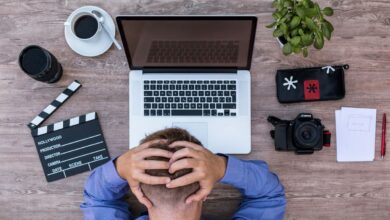AI Answering Service: How They Work, Types, Benefits, How to Improve Yours

In today’s fast-paced business world, missing customer calls means losing opportunities. An AI answering service helps businesses manage incoming calls efficiently by providing instant responses, accurate information, and effective routing. But what exactly is an AI answering service, and how can it benefit your business?
What is an AI Answering Service?
An AI answering service is an automated system that leverages artificial intelligence to answer phone calls, interact with customers naturally, and handle various tasks without immediate human involvement. Unlike traditional voicemail or answering machines, AI services use natural language processing (NLP) and machine learning to respond accurately and promptly. For a deeper cut, you can familiarize yourself with basic AI answering service terminology you should know as your business navigates vendors.
Benefits and Why You Should Use One for Your Business
24/7 Availability
AI answering services handle calls at any time, day or night. For example, a plumbing business using an AI answering service can respond to emergency calls immediately, reassuring clients and scheduling urgent visits seamlessly.
Cost Savings
AI answering reduces staffing and training costs significantly, providing efficient service without requiring additional personnel. Businesses have reported savings of up to 30% on administrative expenses.
Lead Qualification
AI can effectively screen calls by gathering critical customer information and determining lead quality. For instance, a medical offices AI receptionist would quickly identify urgent calls issues versus routine calls like prescription refills and dispatch the urgent calls accordingly.
Multilingual Support
Businesses serving diverse communities benefit greatly from multilingual AI systems. An AI answering service can manage calls in various languages, expanding customer reach without language barriers. Where Spanish live answering service agents are common, you can expand into any language you need using AI – like Mandarin or French!
Scalable Solutions
AI answering services scale effortlessly, adapting from a few daily calls to thousands. This flexibility benefits enterprise businesses who can be plagued by sporadic increases in call volume.
Consistency Across Locations
AI ensures uniform customer interactions. For businesses with multiple branches or franchises, this consistency ensures every customer receives the same high-quality service experience.
How an AI Answering Service Works
Program FAQs
All AI answering services, even agentic AI services, need the user to educate the AI on their business. Using AI isn’t just a magic pill to solve all of your communication issues with no effort. The first hurdle is usually updating FAQs to preload answers to frequently asked questions, like after hours rates or service areas covered, ensuring quick and accurate responses.
Add Business Hours and Company Data
If the AI vendor is small business targeted, there’s almost always 0 coding involved. That means all data you enter is done via an online interface. Hooray! Most services will want to know when you’re open and other office data (like your address and key employees) so you’ll almost always be able to input operational hours and details about your small business into the system with ease.
Configure Call Handling
Determine which calls should be managed by AI and which should escalate. For example, a lawyer may want existing clients’ calls handled by AI where new inquiries or new cases are transferred to a live person immediately.
Analyze Call Data
Most vendors will provide detailed analytics on calls handled by AI and those escalated to live agents – or transfers if your service doesn’t hand off calls to real call center agents. Using these insights, a plumbing business can refine processes and increase efficiency.
Repeat and Refine
Continuously update and refine AI configurations based on collected data, enhancing customer interactions and operational efficiency.
Types of AI Answering Services
Interactive Voice Response (IVR)
The simplest form of AI answering, using keypad entries (DTMF) without speech recognition. This can be considered the first generation of automated answering service before AI – though any IVR now is likely using some form of AI.
Strictly AI Message Taking
AI captures caller information accurately and forwards messages without human intervention.
AI Message Taking with Transfers
AI takes messages but also identifies urgent or specific calls that need live human interaction and transfers accordingly.
Appointment Setting
Advanced AI services schedule appointments directly or send appointment scheduling links via SMS for customer convenience.
AI with Live Operator Escalation
Combines AI’s efficiency with human judgment by escalating complex calls or dissatisfied customers to live operators.
How to Improve Your AI Answering Service
- Regularly Update FAQs: Consistently review and expand your FAQ list based on caller feedback and inquiries.
- Monitor Performance Metrics: Track AI call success rates and adjust call flows or escalation rules accordingly.
- Enhance Customer Scripts: Improve your conversational scripts regularly to sound natural and friendly.
- Integrate Customer Feedback: Incorporate real customer feedback into your AI to ensure relevance and responsiveness.
- Train Staff for Escalation: Ensure your live agents understand when and why calls are escalated, creating a seamless transition from AI to human interaction.
By embracing AI answering services, businesses streamline operations, reduce costs, and provide exceptional customer experiences around the clock.



